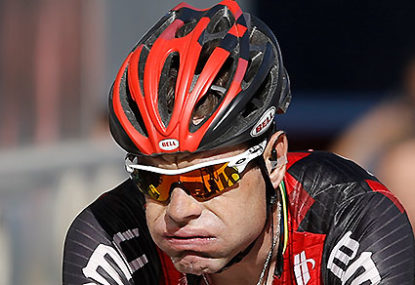'I've just won a stage of the Tour de France, mate!': Hindley grabs yellow jersey as Aussie blows Tour apart
Australia's Jai Hindley has said he is "lost for words" after a shock stage victory at the Tour de France earned him the leader's…

Le Tour’s two days in the Pyrenees arrive rather suddenly, erupting in the final 40km of Stage 8 with the biggest climb of the race also the first proper ‘berg the riders encounter.
The hors catégorie Col De Pailheres peaks at 2001m, which means there’s 5000 Euros and the Souvenir Henri Desgrange on offer for the first rider to summit.
First raced in 2003 and then in ’05, ’07 and ’10, the Col de Pailheres will really hurt some legs as the first 131km are flat before the climbing begins.
This Col officially starts at 155km but the road really starts to point up from around the 130km mark.
As it’ll take a while for most riders to get into a new rhythm, those that adjust more quickly could steal a decisive advantage.
There are sections of nine, 10 and 10.5 percent on this climb before a mad 20km descent takes the peloton to the foot of the final eight km of the stage and the ascent of Ax 3 Domaines.
The first summit finish for the 2013 edition has a maximum pitch of 10.5 percent but averages 8.2 percent.
This is the third time a Tour stage has finished here. In 2003, Carlos Sastre put a dummy in his mouth as he crossed the line in tribute to his baby daughter. Two years later, Gerolsteiner’s Georg Totschnig added his name to the winner’s ledger.
Given what lies ahead on stage nine, this should be a stage Sky controls, but these short and brutal slopes are the type of parcours riders like Alberto Contador and Joaquim Rodriguez love.
Of course this is also the home ground for the team some call the ‘Bleeding Carrots’ – Euskaltel Euskadi. Fans of the Basque-supported team will coat these slopes in orange and may well inspire an attack.
There’s plenty of experience in Euskaltel, despite the absence of super Sammy Sanchez, but responsibility for dealing with the high mountains has been handed to Igor Anton – a Giro and Vuelta stage winner – and Mike Nieve – a multiple stage winner at the Vuelta.
As the only way to beat Sky in the mountains is to attack them, we could see some decent action but, given this is the first of many mountain days, safety first will be the major theme.
I’m sure we will see a late flurry of attacks in the final two kilometres as riders try to land a psychological blows, but no one will want to go too deep into the red so early.
If anything, the problem with stage eight will more likely be for those who can’t survive the Sky tempo.
Cadel Evans has always said he like the parcours of the Pyrenees more than the Alps.
Generally, shorter, steeper and rougher, stage nine may be to his liking, but not in the way you might think. More about that in a moment.
The second and final day in the Pyrenees should play into the hands of a rouleur with four Cat One and one Cat Two climbs to conquer in just 168.5km.
The highlight of stage nine is a climb that is often considered an entrée to a main course of classic Pyrenean peaks like the Tourmalet and the Aubisque.
In fact, such is the lack of fear about this climb, former Tour Director Jean-Marie Leblanc described the five-hairpin ascent as a “moss carpet” due to its lush grassed slopes.
At 1569m the Peyresourde was first climbed in 1910, the debut year for the high mountains in the Tour de France.
Since then the Peyresourde has featured more than 60 times, and was twice summited last year, when Alejandro Valverde and Thomas Voeckler conquered the 13.2km climb, which averages seven percent.
Although Jan Ulrich crashed once on the Peyresourde, the final 30km of stage nine is where the real drama could show its hand.
After summiting the 1564m Hourquette d’Ancizan (9.9km at 7.5 percent), there’s a 30km descent to the finish.
On these slopes in 2011, escapees Geraint Thomas, Thomas Voeckler, Blel Kadri and Jeremy Roy and José Iván Gutiérrez Palacios all came to grief on the damp descent, which will reward those who dare.
Tour de France technical Director Jean Francois Pescheux had Cadel Evans in mind when designing this stage, telling the official Tour Guide, “We thought it might inspire the likes of Sanchez or Evans to put together an interesting tactical plan in the hope of destabilising the likely dominance of the Team Sky.”
Cadel’s mountain bike past means he is well suited to this crazy descent, so will it be here when he tries to reclaim some of the 23 seconds he lost to Chris Froome in the Team Time Trial?